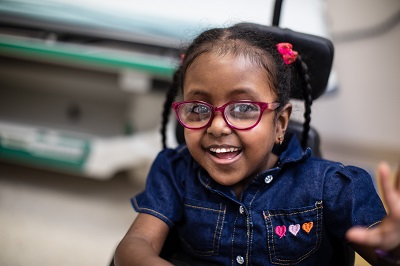Condition
Pediatric Myasthenia Gravis
What You Need to Know
Myasthenia gravis (MG) is a disorder that causes weakness in muscles around the body. It mostly affects the eyes, mouth, throat, arms and legs.
Key Symptoms
Common symptoms of myasthenia gravis may include:
- Babies may be weak and have poor sucking
- A child may become very tired after very little activity
- Weakness in the arms and legs
Diagnosis
Doctors typically diagnose myasthenia gravis by:
- Electromyogram/nerve conduction study
- Tensilon test
- Blood tests
- Genetic tests
Treatment
Transient neonatal MG goes away on its own. There is no cure for juvenile or congenital MG, but the symptoms may be controlled:
- Breathing support
- Nutritional support
- Medicines
- Thymectomy
- High-dose intravenous immune globulin
- Plasmapheresis
Schedule an Appointment
Our pediatric specialists provide personalized care for your child’s physical, mental and emotional health needs. Meet our providers and schedule an appointment today.
Frequently Asked Questions
What is myasthenia gravis?
What causes myasthenia gravis?
Who is at risk for myasthenia gravis?
What are the symptoms of myasthenia gravis?
How is myasthenia gravis diagnosed?
How can I help prevent myasthenia gravis?
How is myasthenia gravis treated?
What are possible complications of myasthenia gravis?
How can I help my child live with myasthenia gravis?
When should I call my child’s healthcare provider?
Meet the Providers Who Treat Myasthenia Gravis
Departments that Treat Myasthenia Gravis

Neuromuscular Medicine Program
The Neuromuscular Medicine Program leverages the expertise of a multidisciplinary teams, cutting-edge research and innovative technologies to care for a spectrum of neuromuscular conditions affecting children from infancy to age 21.

Help Kids and Make a Difference
Invest in future cures for some of life's most devastating diseases. Give today to help more children grow up stronger.





